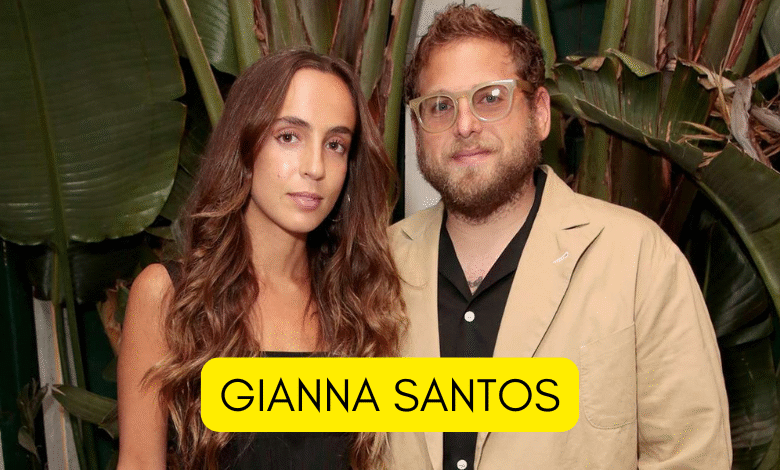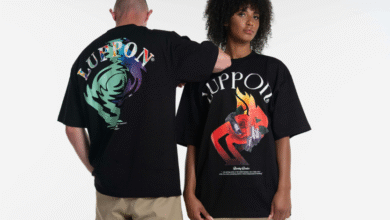Gianna Santos — Her Journey, Style, and Lessons from a Creative Storyteller

I first came across Gianna Santos when reading about art direction in fashion and visual storytelling. What struck me was how she balances style and substance, not chasing flash but letting her work tell a story. In an age of over-curation, happening fashion moments, and relentless image feeds, her approach feels grounded. She shows that creativity isn’t always about the biggest budget or loudest visuals. It can be about subtlety, intention, and connecting with people in honest ways.
In this article, I’ll walk you through who Gianna Santos is, how she got started, what drives her creative voice, her big wins and tough lessons, and what aspiring creatives can learn from her. I’ll also look at her current projects and where she seems to be going. My goal is to give you a clear, human picture—not some glossy press release.
1. Who is Gianna Santos
1.1 Early Life and Education
Gianna Santos grew up in TriBeCa, New York City. That city itself is a teacher. The mix of architecture, art, different people, and constant creativity can’t help but leave marks on someone interested in visual work. As a young person, Gianna was drawn to design and storytelling. She didn’t narrowly think: fashion only. She saw how clothes, image, design, words, and environment all interact to express culture and identity.
She later attended Fordham University, majoring in Communications and minoring in Sociology. Those fields give useful tools—not just the ability to speak, but to understand people, culture, and social dynamics. These foundations often show up in her work: she seems to care about how visual culture reflects larger ideas about identity, gender, society. Education for her wasn’t just a means to a job; it shaped how she sees the world.
1.2 Personal Background & Early Influences
Nobody starts fully formed. Like many creatives, Gianna’s early influences came from what she saw in her neighborhood, what she consumed (media, art, design), what she experienced. Things like architecture, film, street style. She also mentions being moved by stories—music mixtapes when she was young, found songs that felt “slept on,” making a narrative among them. That kind of sensitivity—choosing what resonates, composing pieces so they tell something—shows up in her later work.
2. Career & Creative Work
2.1 First Projects & Early Career
After university, Gianna began working in roles that let her experiment with visual storytelling: styling, producing, art direction. She kept building her voice, portfolio, network. Early work might have been smaller shoot sets, assisting bigger names, testing her style. Those early moments are important: they provide mistakes, flexibility, learning without huge pressure.
She worked in fashion brand settings, beauty, editorial scopes. One of her roles was as content manager at Violet Grey, a beauty company in Los Angeles. That gave her exposure both to brand voice development and to refining the visual aesthetics of beauty content. It also likely involved collaborating cross-functionally—photographers, stylists, editors, clients. These experiences build both craft and the soft skills needed to execute creative projects well.
2.2 Her Role: Art Director / Stylist / Producer
Let’s unpack what each of these roles includes, and how Gianna seems to wear them.
-
Stylist: Choosing clothing, accessories, looks; figuring what pieces work together; how they photograph; how they reflect mood, message, identity.
-
Art Director: Bigger vision. Not just clothes, but how everything around them works—settings, props, lighting, environment. Making sure the mood, angles, colors, shape tell the intended story. It’s about guiding the overall visual message.
-
Producer: Logistics, organization, making sure the creative vision becomes real. Budgeting, coordinating people, scheduling, making sure all the parts—crew, materials, permissions—are there. A producer often ensures the art direction and styling vision can be executed practically.
Gianna toggles among these roles. That means she has to think both big picture and down in the weeds. She has to understand aesthetics but also the constraints—budget, client needs, deadlines. That mix often gives more grounded and resilient creative work.
Read Also: Dave clark amazon Legacy: Innovations, Lessons, and What’s Next
2.3 Notable Collaborations & Milestones
Some of her more public accomplishments: she worked with brands like Bergdorf Goodman × Kith, Violet Grey, and Miaou. These are not small names. They often require professionalism, style, vision to align.
One project she calls especially fulfilling is Bergdorf Goodman x Kith, where she felt real trust in her creative vision. That kind of trust is rare. It means that clients believe in what she brings—not just letting her follow trends, but allowing her to propose, experiment, shape something distinct.
3. Creative Philosophy & Style
3.1 What Visual Storytelling Means to Her
Visual storytelling is more than pretty pictures. It’s about mood, context, emotion. It’s about layering. For Gianna, the story might start with a feeling—nostalgia, simplicity, identity—and evolve through what the viewer sees: color palettes, composition, styling, styling details, locations. She seems to prioritize authenticity: real moments, relatable details over flashy excess. In interviews she has said that social media allows more humanity and humor, that people gravitate to “real and relatable” over the polished and perfect.
3.2 Aesthetic & Design Approach
One phrase that comes up with her is “less is more.” It suggests restraint, simplicity, editing, leaving things out rather than adding extra clutter. Clean lines, coherent color palettes, balancing proportion and negative space. Part of her style is letting each component have space to breathe—it’s not about overloading.
Also, color, texture, shape matter. Sometimes it’s about contrast (light/dark, hard/soft), sometimes about matching mood: warm tones vs cool tones, minimal vs bold statement. Her styling and art direction seem aware of cultural context—so that what looks good also communicates something.
3.3 Inspirations, Influences, and Method
Gianna draws inspiration from various sources: old films, stand-ups, humor, nostalgia. She has mentioned enjoying old Sandler films and HBO stand-ups. Observing what makes people laugh, what makes them feel—these, she says, are powerful. Also internet culture, comments, likings—the little voices of what people respond to.
She also seems to have personal rituals: walks, being in nature, self-care moments, letting ideas emerge when not forced. Ideas often come when mind is free. These rituals are part of sustaining creativity.
4. Personal Life & Public Relationships
4.1 Relationship with Jonah Hill
Gianna Santos was once engaged to Jonah Hill. They began dating around 2018, engaged in 2019, before eventually calling off the engagement a bit over a year later. The breakup was reported as amicable, according to media sources.
While this relationship drew public attention, Gianna has kept much of her personal and professional identity distinct. The relationship did bring her into more public view, but she did not seem to let it define her work or brand.
4.2 Managing Public vs Private Identity
Balancing a public life and private self is a common challenge. For someone like Gianna, whose work is creative and sometimes in spotlight (fashion, content, visuals), it’s tricky. She seems to manage this by focusing on her craft first—letting work speak. Also, being selective about what she shares, having clarity on what she wants people to know vs what remains private.
5. Challenges, Lessons & Advice
5.1 Creative Challenges
From what she has spoken about, there are several recurring challenges:
-
Creative constraints: Working with other people’s vision, client’s needs, brand guidelines. Sometimes you have to adapt, compromise, even when your artistic instinct says another route.
-
Self-doubt / filtering ideas: She has said that in early days she used to shoot down ideas before giving them chance because they felt too far-fetched. That’s common: fear or thinking one’s ideas aren’t good enough.
-
Consistency: Maintaining a strong, coherent style while also adapting to different projects, clients, and changing trends.
-
Visibility vs overexposure: Choosing what projects to do, when to speak out, how much to push personal branding without veering off focus.
5.2 Lessons Learned; What She Wishes She Knew Early On
From interviews, some things stand out:
-
Believing in own vision more. Give big ideas a chance. Don’t discard before trying.
-
Confidence is as important as skill. It’s one thing to have good taste, another to stand by choices, even when others are uncertain.
-
Relationships matter: having clients, collaborators who trust you helps.
5.3 Advice for Aspiring Creatives
If you’re trying to follow a path similar to Gianna:
-
Build strong foundations: education, observing culture, knowing what moves you.
-
Practice often: even small projects, personal work, experiments.
-
Be versatile: know styling, editing, producing, or at least understand those roles.
-
Take feedback but protect your voice. Be willing to adapt but not so much that you lose what makes your work unique.
-
Self-care helps. Burnout kills creativity. Walks, rest, reflection matter.
6. Current Status & Future Plans
6.1 Recent Work
Gianna is currently based in Los Angeles. She has worked with beauty brands, fashion brands, editorial. In her LinkedIn profile, she has roles including content manager at Violet Grey. Her portfolio shows a mix of styling, producing, art directing. Her Instagram demonstrates her visual voice, showing behind the scenes, fashion editorials, color work.
6.2 Vision for the Future
From what can be gathered, Gianna seems interested in expanding work where she has more creative control—projects that allow her voice, her storytelling, to come through. She cares about identity, culture, emotional connection, and might want to do work that moves beyond commercial styling into more narrative, editorial, or cultural commentary. Probably also collaborations that allow experimentation—perhaps independent projects, campaigns that align with personal belief or aesthetic vision.
Conclusion
Gianna Santos is someone who combines aesthetic sensitivity, thoughtful visual storytelling, and a grounded sense of identity. Her trajectory shows that success in creative fields doesn’t just come from big moments, but from consistent growth, small experiments, maintaining voice, and learning to trust your taste. For anyone interested in art direction, styling or creative production, her story offers useful lessons: work hard on craft, don’t be afraid to have bold ideas, but also respect the process and constraints.
Frequently Asked Questions
Q: Who is Gianna Santos?
A: She is an art director, stylist, and producer known for fashion and visual storytelling. She has worked with brands such as Violet Grey, Bergdorf Goodman × Kith, and Miaou.
Q: What is her creative style or philosophy?
A: Her style leans toward “less is more,” favoring simplicity, authenticity, clean design. She values visual narrative and emotional resonance over flashy visuals. She often infuses her work with details that make it feel human and relatable.
Q: What are some of her most notable collaborations?
A: Among her more public work: Bergdorf Goodman × Kith, Miaou, Violet Grey. She also has roles that include content management, styling, producing.
Q: What happened between Gianna Santos and Jonah Hill?
A: They were engaged after dating for some time, but their engagement was called off in 2020. The reports say the split was amicable.
Q: What advice does she have for budding creatives?
A: Some advice gleaned from her interviews: trust your vision; don’t be quick to discard ideas; maintain consistency but be open to learning; take care of your well-being; build skills and relationships.



